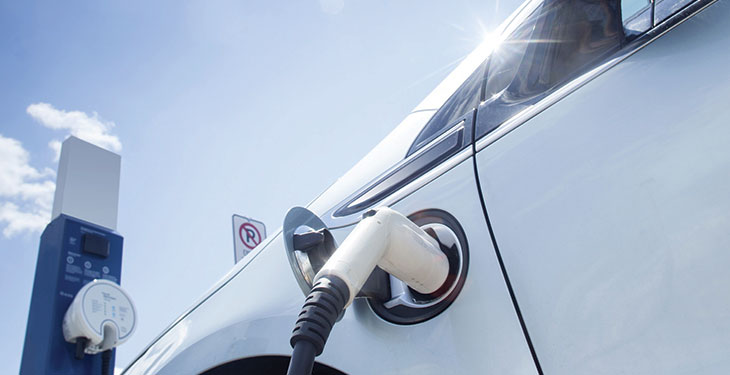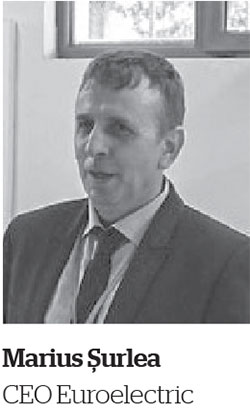Euroelectric launched two new charging stations for electric vehicles this year and will launch a third DC model in the spring of 2021. Marius Șurlea is the CEO of Euroelectric, one of the very few local companies directly involved in the infrastructure of electric cars. We talked about the place that Romanian companies can occupy in the electric mobility revolution and about the role that Euroelectric intends to play.
Dear Mr. Marius Șurlea, for many decades, the great technological revolutions are dominated of international industrial groups, with large resources allocated every year for research and development. Once a technology becomes stable enough, it spreads rapidly globally. With the growing demand, more and more competitors appear and various alternatives challenge the pioneering technology. What is the situation in the field of electric cars and their charging infrastructure? What stage of technological development are we in now?
The infrastructure for electric cars is in its infancy in Romania and is expanding at a rapid pace in Western Europe and North America. In the last month, the government program Electric Up was launched in Romania, which I believe will stimulate the implementation of charging infrastructure for the electric vehicle on large scale.
We observe the speed with which research in the field of non-polluting energies is progressing and we see how every month new technologies and upgrades appear to the solutions already established. As you said, there is a huge interest in innovative solutions in the electric car segment. Two charging methods have now been defined; the first in alternating current, cheaper and easier, and the second in direct current, faster, but more expensive because it needs high power points of connection to the grid. For some time now, investors in charging stations for electric vehicle are already looking for solutions so that the electricity supplied to the electric car is from green sources.
What are the strengths that have allowed Euroelectric to enter this sector?
Our openness to all that is new, to innovation, the desire to have a cleaner air in cities and in the vicinity of national parks or ski resorts – pushed us to start developing a prototype electric e-charging station three years ago. Our production facility has all the equipment to produce and test the stations. Euroelectric has licensed specialized technicians and programs that make technological processes constantly monitored and improved. We appreciate that our determination is the fuel that propels us in new projects every 2 years.
How do Euroelectric e-charging stations differ from the standard solutions of giants such as ABB, Siemens, Bosch, Tesla, etc.?
Our charging stations can be configured according to the customer’s requirements and mounting conditions. Through the flexibility of the production facility we can quickly fulfill various orders. In order to meet the customer needs, our specialists analyze the optimal solutions for preparing the configuration of the e-charging station. In addition to the delivery, Euroelectric also provides installation and preventive maintenance services, which are included in the cost of the product as a bonus for one year.
What are the main competitors for Euroelectric?
Of course there are certain manufacturers that can compete with us, but we see differently this competition. Everywhere there is some space left in the world of giants, there you will find us. Our competition is limited to the technical part of the products; we apply industry experience and field information much faster than large companies, as they have some degree of rigidity in their decisions. An example is the way we scrutinize the observations of those who charge their electric vehicles at our stations in Baru, because we want the user interface to be friendly and simple. This is also a reason why access to charging stations is still free.
The charging infrastructure for electric cars in Romania is developed mainly through public funds (European, municipal, governmental). Are these investment projects open to Romanian companies? What are the obstacles that prevent a more solid presence of Romanian companies in such projects?
In general, the conditions imposed in the financing guidelines contain technical data taken from large companies, but in the end this is normal, because we are talking about innovative products with no history on the domestic market. However, the authorities should limit to the minimum requirements imposed by the latest standards for e-charging stations. This would avoid market distortion by criteria related to size, mass, color or any other points unrelated to user safety, reliability and predictability of the steps in accessing the station.
Do you see the possibility of closer collaboration between local companies to come up with wider, more complex and more competitive offers in the area of electric mobility – as we see from global leaders?
Yes, a collaboration of local companies is possible; we are considering a platform that can change local competitors into allies. We have local suppliers for certain components and we intend to increase the portfolio, so as to shorten production time even more and of course reduce costs.
Have you identified a potential for integrating the ‘green’ generation solutions into the charging infrastructure for electric cars of Euroelectric?
We are working on a platform that will be able to manage the use of e-charging stations in such a way that investments can be recovered quickly. The distribution and availability of charging points in as many areas as possible will increase the confidence of those who want to drive an electric car. For charging electric vehicles, where energy consumption is monitored, the authorities should allow differentiated contracting and charging of energy depending on the availability of photovoltaic, wind or other green energy systems.
There are still many methods of paying for charging an electric car, which indicates that a widely accepted solution has not yet been found. What do you think will be the formula that will be imposed in Romania and how is Euroelectric preparing for it?
The solution I expect, as I said earlier, is to have differentiated tariffs compared to other applications, in order to encourage the development of e-charging networks and to boost the transition to electric cars.
It should be possible to pay for charging electric vehicles under simplified conditions from a commercial point of view, like any usual service which is not covered by regulated electricity tariffs. For sure, there will be unitary regulations for the technical elements of these e-charging points, and we are prepared from this perspective, as all our stations support the OCPP 1.6 protocol which makes them able to take over and transmit energy data remotely, in real time.
—————————————-
This interview firstly appeared in the printed edition of Energynomics Magazine, issued in December 2020.
In order to receive the printed or electronic this issue of Energynomics Magazine, we encourage you to write us at office [at] energynomics.ro to include you in our distribution list. All previous editions are available HERE.

